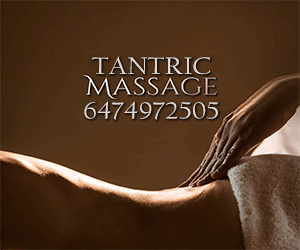- Joined
- Aug 8, 2009
- Messages
- 1,417
- Reaction score
- 962
- Points
- 113
Two or three one-hour sessions a week reduced pain, improved functioning
WebMD News from HealthDay

By Kathleen Doheny
HealthDay Reporter
FRIDAY, March 14, 2014 (HealthDay News) -- Massage can relieve neck pain if it's done often by a professional therapist and for the correct length of time, according to new research.
One-hour sessions two or three times a week appear to be best, said study researcher Karen Sherman, senior scientific investigator at Group Health Research Institute in Seattle.
"In the short term, 60 minutes of massage is better than 30, and you want to do multiple treatments a week for the first four weeks," she said.
Her study, which tested the effects of a month of massage, is published in the March/April issue of the Annals of Family Medicine.
Persistent neck pain is common and stems from numerous causes -- car accidents, sleeping in awkward positions or spending hours hunched over a computer, among them, Sherman said.
Doctors often recommend anti-inflammatory medicines, but these drugs frequently don't provide enough relief, she noted. "People with back and neck pain aren't usually satisfied with what they get from their doctor, so they are looking around for something that works," Sherman explained.
Previous studies of massage for neck pain have produced conflicting results, so Sherman's team decided to look closer. Specifically, they wanted to determine what dose of massage is ideal. In a previous study, Sherman had found that benefits of massage were evident after four weeks.
For the new study, she randomly assigned 228 men and women, aged 20 to 64, to one of six groups. These included 30-minute massages two or three times weekly, one-hour massages one, two or three times weekly, and a comparison group receiving no massage.
Assessing neck functioning and pain levels a week after treatment ended, the researchers determined that patients getting one hour of massage three times a week showed the most gains after four weeks of massage.
Compared to those who got no massage, "people getting massage three times a week were almost five times as likely to have a clinically meaningful (meaning important or noticeable) improvement in function and over twice as likely to report a clinically meaningful decrease in pain," Sherman said.
Many patients who get therapeutic massage for chronic neck pain may not reap benefits if they undergo shorter or less frequent sessions, the authors suggested.
Jeanette Ezzo, a massage therapist and researcher in Takoma Park, Md., called the study "an important contribution to understanding the massage dosage necessary to relieve neck pain." Ezzo has published research on the effectiveness of complementary medicine practices, including massage.
Nationwide, the average cost for a one-hour massage by a professional massage therapist is $65, according to the American Massage Therapy Association. However, in large cities the fee can be much higher.
Insurance coverage varies, said Sherman. Whether massage therapy would work in elderly patients isn't known as the average age of her patients was in the 40s.

WebMD News from HealthDay

By Kathleen Doheny
HealthDay Reporter
FRIDAY, March 14, 2014 (HealthDay News) -- Massage can relieve neck pain if it's done often by a professional therapist and for the correct length of time, according to new research.
One-hour sessions two or three times a week appear to be best, said study researcher Karen Sherman, senior scientific investigator at Group Health Research Institute in Seattle.
"In the short term, 60 minutes of massage is better than 30, and you want to do multiple treatments a week for the first four weeks," she said.
Her study, which tested the effects of a month of massage, is published in the March/April issue of the Annals of Family Medicine.
Persistent neck pain is common and stems from numerous causes -- car accidents, sleeping in awkward positions or spending hours hunched over a computer, among them, Sherman said.
Doctors often recommend anti-inflammatory medicines, but these drugs frequently don't provide enough relief, she noted. "People with back and neck pain aren't usually satisfied with what they get from their doctor, so they are looking around for something that works," Sherman explained.
Previous studies of massage for neck pain have produced conflicting results, so Sherman's team decided to look closer. Specifically, they wanted to determine what dose of massage is ideal. In a previous study, Sherman had found that benefits of massage were evident after four weeks.
For the new study, she randomly assigned 228 men and women, aged 20 to 64, to one of six groups. These included 30-minute massages two or three times weekly, one-hour massages one, two or three times weekly, and a comparison group receiving no massage.
Assessing neck functioning and pain levels a week after treatment ended, the researchers determined that patients getting one hour of massage three times a week showed the most gains after four weeks of massage.
Compared to those who got no massage, "people getting massage three times a week were almost five times as likely to have a clinically meaningful (meaning important or noticeable) improvement in function and over twice as likely to report a clinically meaningful decrease in pain," Sherman said.
Many patients who get therapeutic massage for chronic neck pain may not reap benefits if they undergo shorter or less frequent sessions, the authors suggested.
Jeanette Ezzo, a massage therapist and researcher in Takoma Park, Md., called the study "an important contribution to understanding the massage dosage necessary to relieve neck pain." Ezzo has published research on the effectiveness of complementary medicine practices, including massage.
Nationwide, the average cost for a one-hour massage by a professional massage therapist is $65, according to the American Massage Therapy Association. However, in large cities the fee can be much higher.
Insurance coverage varies, said Sherman. Whether massage therapy would work in elderly patients isn't known as the average age of her patients was in the 40s.




































































































